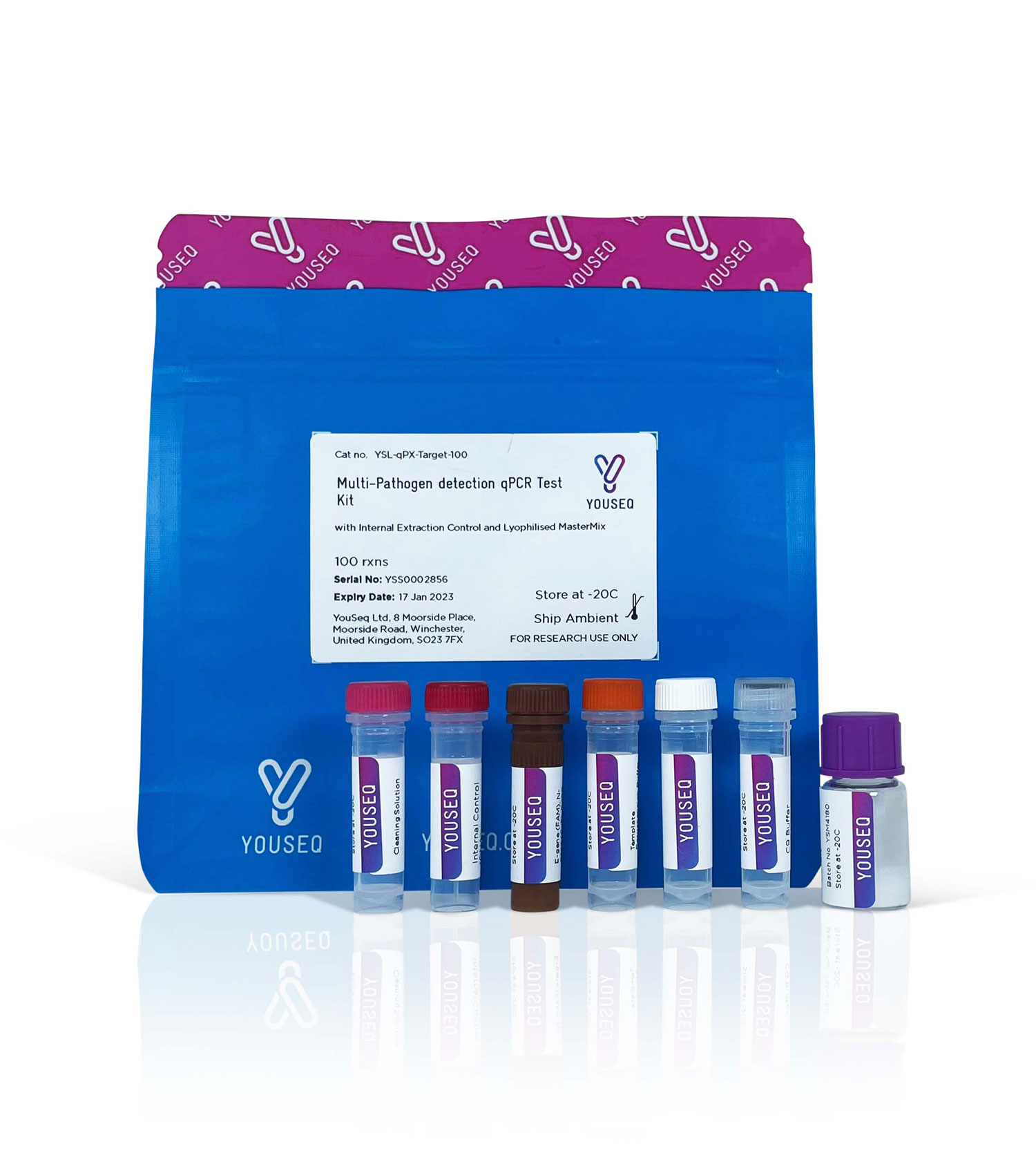Anaplasma, Babesiosis and Ehrlichia Multiplex
Cat no. YSL-qPX-IC-Ana.Bab.Ehr-100

Anaplasma, Babesiosis and Ehrlichia Multiplex
Cat no. YSL-qPX-IC-Ana.Bab.Ehr-100
A multiplex qPCR kit for the detection of Anaplasma, Babesiosis and Ehrlichia
Anaplasma, babesiosis, and Ehrlichia are tick-borne pathogens that can cause severe symptoms such as fever, fatigue, and muscle aches in both humans and animals. Early detection of these pathogens is crucial to prevent the progression of the disease and potential long-term health complications. Failure to detect these pathogens early can lead to misdiagnosis, delayed treatment, and increased healthcare costs.
YouSeq's qPCR kit to detect Anaplasma, babesiosis, and Ehrlichia allows for rapid and accurate identification of these pathogens in samples. This sensitive and specific detection method enables healthcare professionals to provide timely treatment, reduce the spread of these diseases, and ultimately improve patient outcomes. By detecting these pathogens early, YouSeq's qPCR kit contributes to better public health outcomes and decreased economic burden associated with tick-borne illnesses.

Price on enquiry
Order nowFor Research Use Only. Not intended for diagnostic use.
Contents
Internal extraction control primer/probe
qPCR MasterMix
Positive control template
DNase/RNase free water
Template resuspension buffer
Internal extraction control (DNA)
Technical specification
Efficiency: 90-110%
Sensitivity: <100 copy detection
Run Time: Approx 1hr30 (dependent on instrumentation)
Product variants
YS-qPX-IC-Ana.Bab.Ehr-100 : Frozen version for dry ice shipping
Pseudonyms
Anaplasma;Babesiosis;Ehrlichia;Tick-borne fever;Canine granulocytic anaplasmosis;Human granulocytic anaplasmosis;Tick-borne anaplasmosis;Bovine anaplasmosis;Babesia;Ehrlichiosis;Tick fever;Tick-borne disease;Human ehrlichiosis;Canine ehrlichiosis;Potomac horse fever;Disease agent;Pathogen;Microorganism;Vector-borne pathogen;Intracellular parasite;Tick-borne illness;Lyme disease co-infections;Tick-borne encephalitis;Zoonotic disease;Pet disease;Wildlife disease;Tick-transmitted disease;Disease-causing agent;Tick-borne bacteria;Bacterial infection;Tick-borne sickness;Canine disease;Livestock disease;Tick-borne infection;Tick-borne illness;Vector-borne disease;Zoonosis;Bacterial pathogen;Blood parasite;Tick-borne pathogen;Tick-borne bacteria.